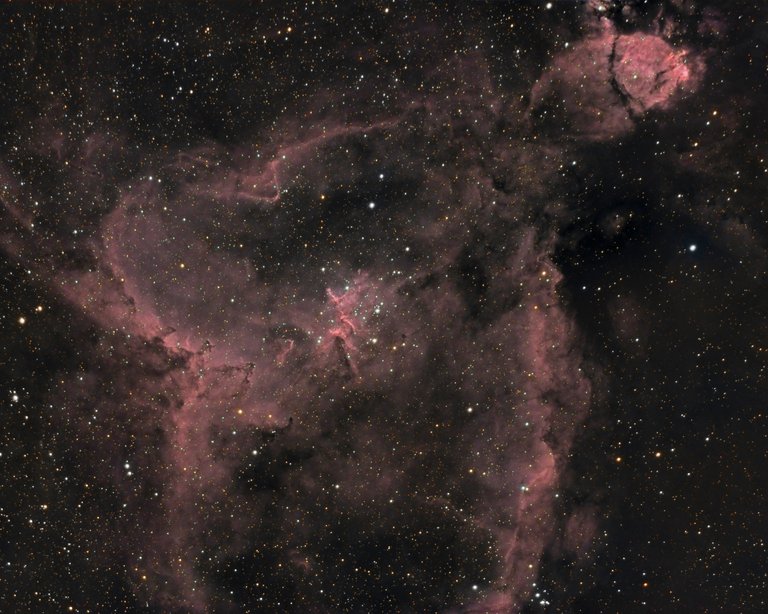
The Heart Nebula (IC 1805) lies some 7500 light years away from Earth and is located in the Perseus Arm of the Galaxy in the constellation Cassiopeia. This is an emission nebula showing glowing ionized hydrogen gas and darker dust lanes. The very brightest part of this nebula (the knot at the western edge) is separately classified as NGC 896, because it was the first part of this nebula to be discovered. The nebula's intense red output and its configuration are driven by the radiation emanating from a small group of stars near the nebula's center. This open cluster of stars known as Melotte 15 contains a few bright stars nearly 50 times the mass of our Sun, and many more dim stars that are only a fraction of our Sun's mass. (dixit Wikipedia)
To take this photo i used the following setup:
Scope: TS Optics ts 80/352 astroimaging
Mount: AZEQ6
Camera: Atik One 6.0
The total exposure is around 4.5 hours over 2 nights in september 2016. As my camera is black & white i use HaRGB color palette by stacking and mapping to RGB a combination of:
10 photos of 20 min flitering around Ha ray of Hydrogen
5 photos of 5 min filtering around Red
5 photos of 5 min filtering around Blue
5 photos of 5 min filtering around Green
I used the software Prism 10 to manage the capture, the pre-treatment (Removing offset, dark and flat). The stacking and the post-treatment was done with Pixinsight and at the end Photoshop.
I used the software Prism 10 to manage the capture, the pre-treatment (Removing offset, dark and flat). The stacking and the post-treatment was done with Pixinsight and at the end Photoshop.
Technical detail of the photo here: https://www.astrobin.com/266734
If you want more information, ask me in comment !
I hope you enjoyed it! If it is the case, resteem and follow me to see more astrophotography.
very nice articele. very interesting.